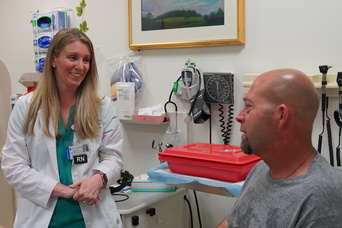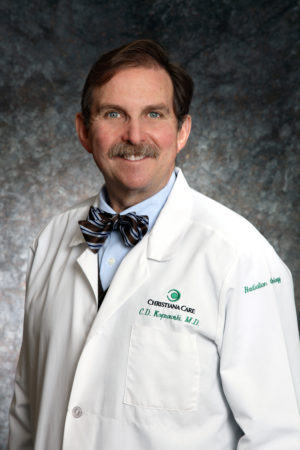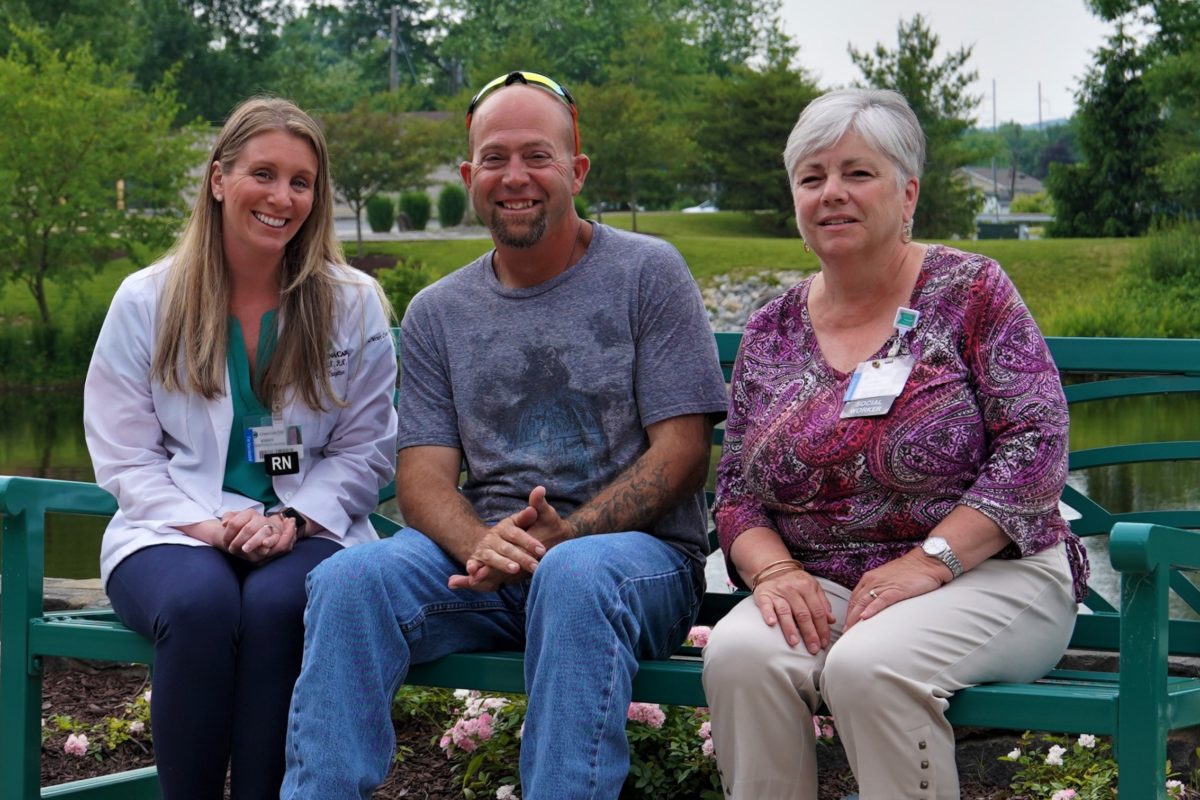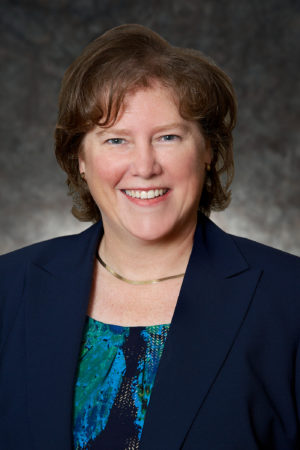A new clinical pathway for patients at Christiana Care’s Helen F. Graham Cancer Center & Research Institute is improving their quality of life, providing better health outcomes and delivering lower heath care costs, according to a study published in the Journal of Clinical Pathways.
A clinical pathway is a tool for achieving high-quality, high-value care through standardization, ensuring that all patients who meet a given criteria receive consistent evidence-based care without unnecessary variation.
Called Supportive Care of Oncology Patients or SCOOP, the pathway launched in November 2016 and initially focused on patients with potentially curable thoracic, colorectal or head and neck cancers who were receiving combined chemotherapy and radiation through one of the Graham Cancer Center’s multidisciplinary clinics.

Due to the nature of their treatment, these patients are at higher risk for debilitating side effects that can send them to the emergency department, such as dehydration from nausea and vomiting, pain or psychosocial distress.
For the first two years of the pathway, when compared to a control group of similar patients not on the pathway, SCOOP patients experienced fewer visits to the emergency department (34% vs. 54%), fewer hospital admissions (23% vs. 34%) and fewer readmissions (18% vs. 32%). Correspondingly, cost savings for pathway patients was estimated on average to be more than $1,500 per patient. The total cost savings for 207 SCOOP patients thru Oct. 31, 2018, was more than $319,000.

“The SCOOP protocol is a unique, early intervention tool shown to improve how we treat curative cancer patients effectively, safely and at lower cost,” said Nicholas J. Petrelli, M.D., Bank of America endowed medical director of the Helen F. Graham Cancer Center & Research Institute. “Our experience would indicate that any group of patients at high risk for emergency department visits and hospital admissions could potentially benefit from this kind of approach.”
Pathway-driven improvements included introducing supportive and palliative care management early in the patient experience and adding in an electronic nurse navigation checklist to keep everyone on track.
“What we have learned is that enhancing supportive and palliative care for patients being treated curatively seems to work as well as for patients with advanced disease,” said Christopher Koprowski, M.D., MBA, associate service line leader for Cancer and director of Quality and Safety at the Graham Cancer Center. “As far as we could determine from our review of the literature, the full scope of this approach was never before applied to patients with potentially curable cancers.”
Recently, the pool of eligible patients expanded to include those with brain and hepatobiliary and pancreatic cancers. The team is looking to broaden participation further to more patients who might be at risk from a multitude of factors that could lead to increased emergency department visits and readmissions including socioeconomic or financial concerns.

Supportive care management starts on day one
On the SCOOP pathway, screening with the supportive and palliative care service is mandatory during the multidisciplinary clinic visit, and, if indicated, urgent or timely consultation.
A comprehensive nurse navigation electronic checklist sets mandatory tasks and milestones during treatment and follow-up as standard care.
“In a somewhat novel approach we leveraged technology by using the Aerial Population Health platform to support nurse navigation,” said Pathway Project Manager E.J. Johnson, Ph.D., MBA, MS, managing consultant for Organizational Excellence at Christiana Care. “The customized Aerial tool allows the nurse navigator to access a combined modality checklist rather than input each task manually. The system automatically generates an individualized task list for each patient.”
Items included are dates for prescribed communication with patients, scheduled consults and reminders to assess additional or unmet needs throughout the course of treatment. As a quality control mechanism, the system requires navigators to opt out of, rather than put in, service consults such as nutrition, behavioral health or social work.
Flags in the inpatient information system alert the supportive care team, the navigators and the oncologists when a patient is seen, admitted or discharged from the emergency room.
Nurse navigator compliance with the new navigation system increased from 94% to 99% during the first year.
“Having that automated process streamlines our workload and helps ensure we don’t miss critical time points for the patient,” said supervising Nurse Navigator Karen Sites, BSN, RN, OCN, who worked with cancer care management to develop the checklist. “The pathway has helped us to follow a formalized, standard process of care for our patients that starts when they first meet with their cancer care team. The result is better care management throughout their course of treatment with fewer adverse side effects that might otherwise send them back to the hospital.”
For more information on cancer care and innovation at Christiana Care, visit christianacare.org/cancer.



